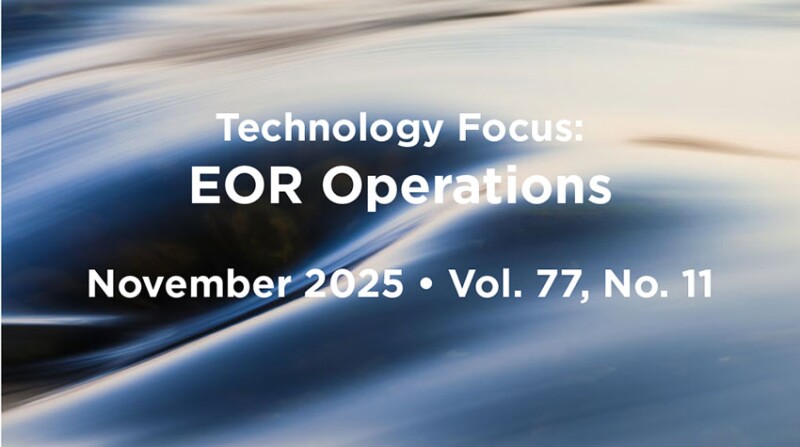Maximizing fossil fuel recovery has been an enduring theme in any age and era. Even easy fields are seeing fewer opportunities for enhanced oil recovery (EOR), but these have been extended by various approaches (e.g., deploying new EOR materials, hybrid methods, and application to unconventional fields). Entrepreneurial mindsets with the motivation to explore new materials, not limited to focusing on traditional hydrocarbon gas, CO2, and chemicals such as polymer and surfactant, are becoming more important for broadening prospects beyond the conventional EOR scene.
Application of EOR in unconventional reservoirs has been quite limited compared with that for conventional reservoirs for decades because of the tough properties of shale and tight reservoirs. Paper SPE 224381 reports on the application of unfractionated natural gas liquid (Y-grade) as injectant into the Eagle Ford reservoir. Y-grade was chosen because of its many advantages in terms of first contact miscibility, favorable relative permeability, solvent benefits, and operational efficiencies such as pumping as a liquid and low risk of containment issues.
Paper URTeC 4235291 highlights the potential of various chemical EOR agents such as ketone and hybrid surfactant/nanoparticles for shale oil in the US at high-temperature and high-salinity conditions beyond traditional surfactant applications. Both laboratory experiments of spontaneous imbibition and huff ’n’ puff showed larger oil recovery improvement using surfactant/nanoparticle blends and ketone than with pure surfactant.
Expanding the scope of material exploration has been encouraged for new potent EOR injectants in parallel with operational breakthroughs to fulfill their field application. Paper SPE 223503 presents the potent seeds of ferrofluid application on micromodel experiments from the perspective of mobility control and a reduction in viscous fingering. The injectant, a colloidal suspension fluid of magnetite nanoparticles, can modify effective viscosity under magnetic fields.
Other notable papers deal with hybrid nanopolymer EOR, an organic oil-recovery method, and a chemical pilot in an unconventional reservoir.
Summarized Papers in This November 2025 Issue
SPE 224381 Eagle Ford Huff ’n’ Puff Single-Well Pilot Uses Large Y-Grade Injection Volumes by Kevin DeLapp and Jonathan Baron, SPE, BlackBrush Oil & Gas, and Quoc P. Nguyen, SPE, The University of Texas at Austin.
URTeC 4235291 Huff ’n’ Puff for Shale Oil Recovery Uses Surfactants, Nanoparticles, and Ketones by Ahmed Aboahmed, SPE, and Kishore Mohanty, SPE, The University of Texas at Austin.
SPE 223503 Microfluidic Strategies Use Ferrofluids for Enhanced Recovery by Fatimah H. AlNasser, SPE, Stanford University.
Recommended Additional Reading
SPE 225353 Laboratory and Simulation Studies of Novel Hybrid Nanopolymer EOR in Carbonate Reservoirs by Altamish Ahmed Pakeer, UAE University, et al.
SPE 224995 Maximizing Oil Recovery and Reducing Water Cut in South Oman Fields: Results From Novel Organic Oil Recovery Waterflooding Campaigns by Linda Tatiana Lezama Viveros, Hunting Energy Services, et al.
URTeC 4260303 Piloting of Chemical EOR in Unconventional Liquid Reservoirs by Mohamad Salman, Chevron, et al.

Hideharu Yonebayashi, SPE, is a distinguished engineer at Japan Oil Development Company with over 30 years’ experience of assignments in INPEX, Japan National Oil Corporation, Bunduq Company, and ExxonMobil Development Company. He holds a PhD degree in petroleum engineering from Tohoku University and has authored or co-authored over 120 technical papers. His main interests are improved/enhanced oil recovery with related technologies such as gas-induced asphaltene risk evaluation. Yonebayashi received the Innovation and Technology Awards at the 2023 Middle East Oil, Gas, and Geosciences conference and the 2024 SPE Oman Petroleum Energy Show. He has served as an SPE Distinguished Lecturer in 2021–22 and as SPE Japan Director since 2015 and is on the JPT Editorial Review Board.

